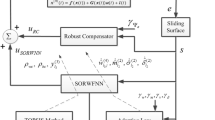Abstract
This study presents a nonlinear systems and function learning by using wavelet network. Wavelet networks are as neural network for training and structural approach. But, training algorithms of wavelet networks is required a smaller number of iterations when the compared with neural networks. Gaussian-based mother wavelet function is used as an activation function. Wavelet networks have three main parameters; dilation, translation, and connection parameters (weights). Initial values of these parameters are randomly selected. They are optimized during training (learning) phase. Because of random selection of all initial values, it may not be suitable for process modeling. Because wavelet functions are rapidly vanishing functions. For this reason heuristic procedure has been used. In this study serial-parallel identification model has been applied to system modeling. This structure does not utilize feedback. Real system outputs have been exercised for prediction of the future system outputs. So that stability and approximation of the network is guaranteed. Gradient methods have been applied for parameters updating with momentum term. Quadratic cost function is used for error minimization. Three example problems have been examined in the simulation. They are static nonlinear functions and discrete dynamic nonlinear system.













Similar content being viewed by others
Explore related subjects
Discover the latest articles and news from researchers in related subjects, suggested using machine learning.References
Becerikli Y (2004) On three intelligent systems: dynamic neural, fuzzy and wavelet networks for training trajectory. Neural Comput Appl 13(4):339–351
Becerikli Y, Oysal Y, Konar AF (2003) On a dynamic wavelet network and its modeling application. Lect Notes Comput Sci (LNCS) 2714:710–718
Galvao KH, Becerra VM (2002) Linear-wavelet models for system identification. IFAC 15th Triennial World Congress, Barcelona, Spain
Gutés A, Céspedes F, Cartas R, Alegret S, del Valle M, Gutierrez JM, Muñoz R (2006) Multivariate calibration model from overlapping voltammetric signals employing wavelet neural networks. Chemometrics Intell Lab Syst 83(2):169–179
He Y, Chu F, Zhong B (2002) A hierarchical evolutionary algorithm for constructing and training wavelet networks. Neural Comput Appl 10:357–366
Ho DWC, Zhang P-A, Xu J (2001) Fuzzy wavelet networks for function learning. IEEE Transact Fuzzy Syst 9(1):200–211
Lin Y, Wang F-Y (2005) Modular structure of fuzzy system modeling using wavelet networks. In: IEEE, networking, sensing and control proceedings, Tucson, Arizona, USA, 19–22 March 2005 pp 671–676
Narendra KS, Parthasaraty K (1990) Identification and control of dynamical system using neural networks. IEEE Transact Neural Netw 1(1):4–27
Oussar Y, Dreyfus G (2000) Initialization by selection for wavelet network training. Neurocomputing 34:131–143
Oussar Y, Rivals I, Personnaz L, Dreyfus G (1998) Training wavelet networks for nonlinear dynamic input ouput modeling. Neurocomputing 20:173–188
Özkurt N, Savacı FA (2006) The implementation of nonlinear dynamical systems with wavelet network. Int J Electron Commun (AEÜ) 60:338–344
Pati YC, Krishnaprasad PS (1993) Analysis and synthesis of feedforward neural networks using discrete affine wavelet transformations. IEEE Trans Neural Netw 4(1):73–85
Polikar R (January 12, 2001) The wavelet tutorial. http://engineering.rowan.edu/∼polikar/WAVELETS
Polycarpou M, Mears M, Weaver S (1997) Adaptive wavelet control of nonlinear systems. In: Proceedings of the 1997 IEEE conference on decision and control, pp 3890–3895
Postalcıoğlu S, Erkan K, Bolat DE (2005) Comparison of wavenet and neuralnet for system modeling. Lect Notes Artif Intell 3682:100–107
Reza AM (October 19, 1999) Wavelet characteristics. White Paper, Spire Lab., UWM
Shi D, Chen F, Ng GS, Gao J (2006) The construction of wavelet network for speech signal processing. Neural Comput Appl 11(34):217–222
Thuillard M (2000) Review of wavelet networks, wavenets, fuzzy wavenets and their applications. ESIT 2000, Aachen, Germany, 14–15 September 2000
Zhang Q (1997) Using wavelet network in nonparametric estimation. IEEE Trans Neural Netw 8(2):227–236
Zhang Q, Benveniste A (1992) Wavelet networks. IEEE Trans Neural Netw 3(6):889–898
Author information
Authors and Affiliations
Corresponding author
Rights and permissions
About this article
Cite this article
Postalcioglu, S., Becerikli, Y. Wavelet networks for nonlinear system modeling. Neural Comput & Applic 16, 433–441 (2007). https://doi.org/10.1007/s00521-006-0069-3
Received:
Accepted:
Published:
Issue Date:
DOI: https://doi.org/10.1007/s00521-006-0069-3




